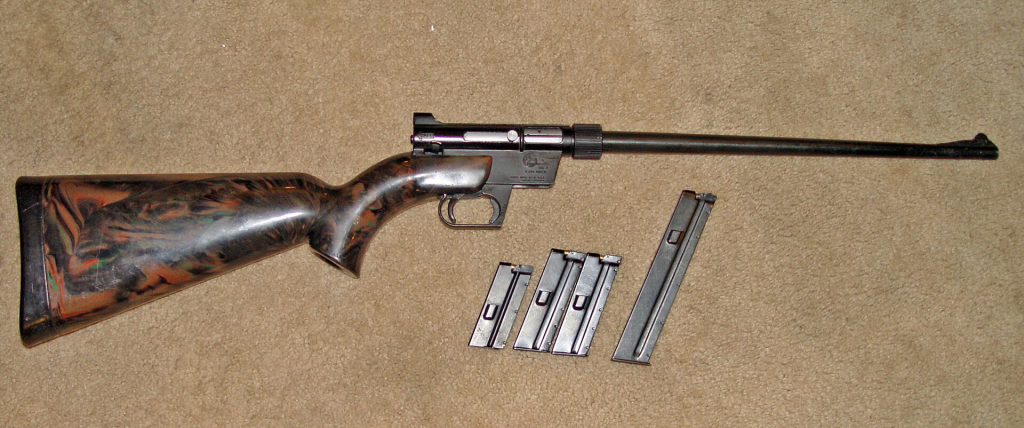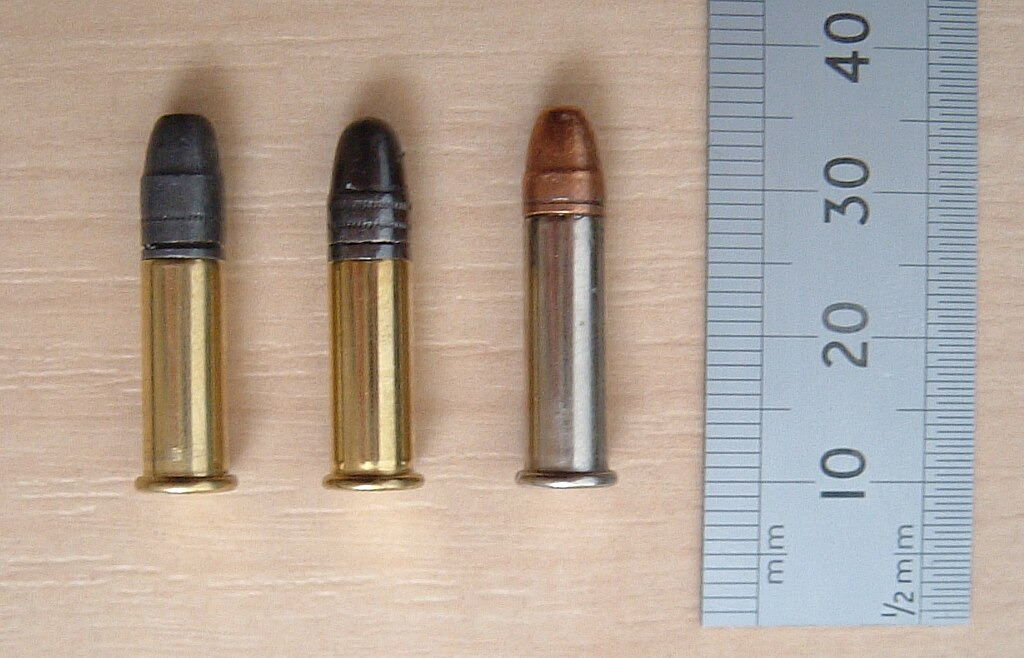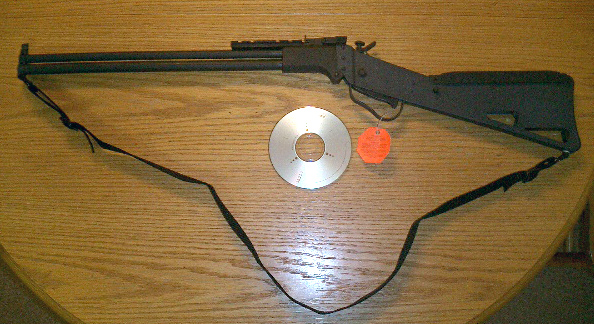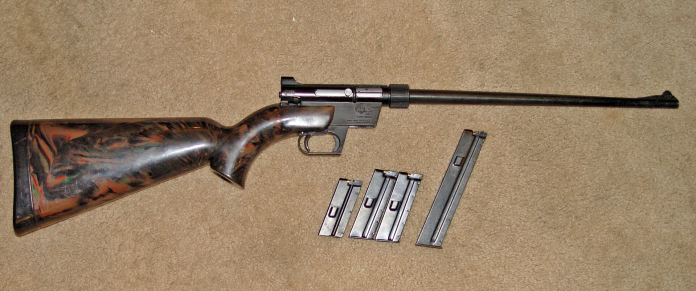
A pilot’s final weapon is not for war it’s for survival. That reality has defined generations of aircrew weaponry, from World War I’s crude revolvers to compact carbines riding behind today’s ejection seats. In enemy territory or harsh wilderness, the proper weapon may be the difference between extraction and catastrophe.

They were never meant to be war-winning instruments. Instead, their basic mission was much less complex survive long enough as a downed pilot to be rescued. To this end, they were required to hunt small game, signal for rescue, and in the worst of circumstances fight off enemy troops. These implements, through the years, developed gradually from crude sidearms to highly specialized rifles designed for extreme compactness and adaptability.
This list chronicles seven of the most prominent c carried by U.S. aviators, and they illustrate how each conformed to the realities of the tactics and technological capabilities of the time.

1. World War I Handguns
In the earliest days of aerial combat, pilots had little more than handguns to rely on after bailing out. Issued sidearms ranged from small .32 ACP pistols to the formidable M1911 in .45 ACP. The M1917 revolver also saw service, offering robust reliability. Compact and light, these weapons fit easily into cramped cockpits a necessity when aircraft space was at a premium.
While adequate for short-range defense, the pistols were weak in hunting prowess and range. An exception was the M-15 revolver, which fired mini flares to signal rescuers. Nevertheless, the lack of the long gun left the pilot in the unfavorable position of having to procure food, occasionally, for days or even weeks.

2. Savage Model 24 Combination Gun
By World War II, the US Army Air Corps desired more versatile options. In large numbers, 15,000, the Savage Model 24, an over/under commercial hunting firearm, was ordered for inclusion in aircrew survivability kits. Its over/under configuration combined a .22LR rifle barrel and a .410 shotgun barrel, offering pilots the precision of shooting small game or putting birds down with shot.
Lightweight and packable, the Model 24 filled the crucial survival gap. Modern derivatives, like the Model 42 Takedown, have the same dual-role functionality demonstrated to be so crucial under war.

3. Harrington & Richardson M4 Survival Rifle
Post-war innovation included the M4 Survival Rifle, a pared-back, lightweight, .22 Hornet chambered bolt-action weapon. Wighning only just shy of 4 pounds and only just under 14 inches long folded, the 14-inch-barreled weapon was remarkably compact.
The M4 only carried four rounds of ammunition within the magazine, and this emphasized the Air Force’s concern for sustenance over firepower during emergency circumstances. They were given soft-point ammunition, and the ammunition containers contained plain language guarantees never to utilize the ammunition for defense or offensive combat. Its composition revealed the Air Force’s concern for sustenance and not for firepower.

4. M6 Aircrew Survival Weapon
Taken up by Remington in 1952, the M6 incorporated the dual-barrel flexibility of the Savage Model 24 and the rugged simplicity of the M4. It joined the .22 Hornet rifle barrel over the .410 gauge shotgun barrel, both 14 inches long, in a stamped-steel frame stock. Its trigger bar was novel because it made the gun operable even while the user wore thick gloves a practical touch for cold-weather survival. Weighing only 4.5 pounds and collapsible for stowage, the M6 stored spare ammunition within the stock. This union of compactness, ruggedness, and multi-caliber versatility made it aircrewmen’s choice for decades.

5. Armalite AR-5 Takedown Rifle
It was developed by Armalite in 1954 as the byproduct of meeting Air Force orders for the XB-70 bomber survival kits. Chambered for .22 Hornet, the bolt action was made of lightweight aluminum alloys and plastics, and weighed just 2.5 pounds.
Its most notable aspect was full stowage: the action, barrel, and magazine all packed inside the polymer buttstock, which would float to prevent contents from being damaged by water. Officially adopted in 1956, production was limited because of the cancellation of the XB-70 program, making the AR-5 an exotic but brilliant design.

6. GAU-5A Aircrew Self Defense Weapon
Today’s standard, the GAU-5A, represents a leap in capability. Based on the M4 carbine, it is chambered in 5.56 NATO and engineered to fit into a 16 x 14 x 3.5-inch ejection seat compartment. A Cry Havoc Tactical Quick Release Barrel system allows rapid assembly under 30 seconds without tools.
Having a 12.5-inch barrel, foldable pistol grip, and Magpul MBUS Pro sights, the GAU-5A achieves the ability to strike man-sized targets out to 200 meters. Four 30-round magazines give the weapon significant firepower, making it significantly better than earlier survival firearms. 2,700 Air Force Gunsmith Shop-manufactured pieces are fielded world-wide, so downed pilots have both defense and hunting capacity.

7. Lt. Leon Crane Teaches Us
The value of survival weapons was emphasized by actual experiences, including Lt. Leon Crane’s 1943 Alaskan crash. With only a Boy Scout knife and matches, Crane found hunting with the crude bow impossible. He eventually found himself standing by the entrance of a trapper’s cabin, where there was a rifle the valuable resource that kept him alive for 84 days until the time of his rescue.

Crane’s survival demonstrates the Air Force’s investment in specially designed weaponry was worthwhile. In the frozen wilds or the enemy’s lair, the proper firearm can buy time for rescue and significantly enhance the probability of living. From pocket pistols to module carbines, aircrew survival firearms have kept pace with aircraft technology and mission requirements. All of the designs represent some sort of balance between packability, utility, and the practicalities of life after ejection. For firearms aficionados and military historians, they are testimonials to necessity-based ingenuity and the timelessness of the axiom that, where survivability is concerned, the correct tool matters mightily.


